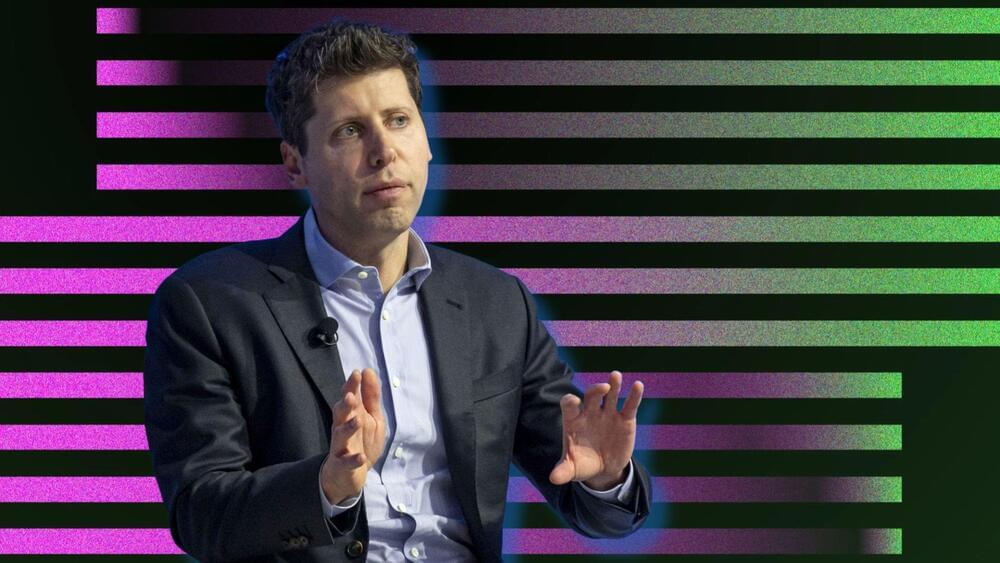An easy way to determine how you really feel about the future.



In just one year, artificial intelligence has gone from being the stuff of science fiction movies to being used as a tool to help us polish our resumes and plan European getaways.
Although generative AI models may be capable of writing emails and reviewing code, these tech experts don’t see them replacing humans any time soon. Here’s why.



Most space heaters run electricity through high resistance wires to toast your toes. The Heatbit mini, however, trains large language models, builds AI for large corporations, or mines crypto while it warms up your home. In so doing, it pays its owners up to $28/month while in use.
“What we really do is zero-energy computing,” says CEO Alex Busarov, who I met at Web Summit in Lisbon recently.
Bitcoin mining and AI training—which has increased one million times over the last seven years—together consume more energy than the entire United Kingdom, Busarov says. All of that goes to waste as heat, which then itself often needs to be cooled in a data or compute center, costing yet more energy.

The recent drama at OpenAI, where CEO Sam Altman was briefly dismissed by the board of directors only to be rapidly reinstated, has sparked discussion about the company prioritizing profits over its original nonprofit mission.
In fact, no company is purely profit-driven, nor should they be. While profits are paramount to survival in the competitive marketplace, they should always be pursued with a degree of social responsibility. What that means will of course vary from person to person and context to context. Still, profits act like a guardrail that prevents managers of organizations from over-indulging their passions. OpenAI’s strict reversal in recent weeks is a clear-cut example of this.
The embrace of capitalism and the pursuit of profits is not just a pragmatic choice to satisfy investors. It will make OpenAI better at achieving its mission of safe and responsible AI, by curtailing the worst excesses of those with power within the company. In a world where artificial intelligence may hold the key to our future, profit isn’t just good, it’s essential for ensuring progress stays on track and remains ethical.

AMD provided a deep-dive look at its latest AI accelerator arsenal for data centers and supercomputers, as well as consumer client devices, but software support, optimization and developer adoption will be key.
Advanced Micro Devices held its Advancing AI event in San Jose this week, and in addition to launching new AI accelerators for the data center, supercomputing and client laptops, the company also laid out its software and ecosystem enablement strategy with an emphasis on open source accessibility. Market demand for AI compute resources is currently outstripping supply from incumbents like Nvidia, so AMD is racing to provide compelling alternatives. Underscoring this emphatically, AMD CEO Dr. Lisa Su, noted that the company is raising its TAM forecast for AI accelerators from the $150 billion number it projected a year ago at this time, to $400 billion by 2027 with a 70% compounded annual growth rate. Artificial Intelligence is obviously a massive opportunity for the major chip players, but it’s really anybody’s guess as to the true potential market demand. AI will be so transformational that it will impact virtually all industries in some way or another. Regardless, the market will likely be welcoming and eager for these new AI silicon engines and tools from AMD.
AMD’s data center group formally launched two major product family offerings this week, known as the MI300X and MI300A, for the enterprise and cloud AI and supercomputing markets, respectively. These two products are purpose-built for their respective applications, but are based on similar chiplet-enabled architectures with advanced 3D packaging techniques and a mix of optimized 5 and 6nm semiconductor chip fab processes. AMD’s High Performance Computing AI accelerator is the Instinct MI300A that is comprised of both the company’s CDNA 3 data center GPU architecture, along with Zen 4 CPU core chiplets (24 EPYC Genoa cores) and 128GB of shared, unified HBM3 memory that both the GPU accelerators and CPU cores have access to, as well as 256MB of Infinity Cache. The chip is comprised of a whopping 146B transistors and offers up to 5.3 TB/s of peak memory bandwidth, with its CPU, GPU, and IO interconnect enabled via AMD’s high speed serial Infinity Fabric.
This AMD accelerator can also run as both a PCIe connected add-in device and a root complex host CPU. All-in, the company is making bold claims for MI300A in HPC, with up to a 4X performance lift versus Nvidia’s H100 accelerator in applications like OpenFOAM for computational fluid dynamics, and up to a 2X performance-per-watt uplift over Nvidia’s GH200 Grace Hopper Superchip. AMD MI300A will also be powering HPE’s El Capitan at the Lawrence Livermore National Laboratory, where it will replace Frontier (also powered by AMD) as the world’s first two-exaflop supercomputer, reportedly making it the fastest, most powerful supercomputer in the world.

AI is divisive. In the modern workplace today, most feel that the impact of Artificial Intelligence (AI) and its new generative strain of wonderment will transform the way we all work in the months and years to come. While some are still reticent to embrace its potential benefits (journalists and people in high-level decision-making roles may be among the more skeptical), data science theorists assure us that even the AI naysayers will soon find a subliminally attractive element of AI functionality coming forward in applications without it announcing itself as some newfangled auto-bot or intelligent assistant.
Among those groups who seem to ready to embrace AI quite readily are web developers, especially those who handle a large amount of image-centric tasks as they work to classify, categorize, manipulate and present pictorial assets for our online applications to illustrate our lives with.
To validate this suggestion, we need to know why working with web images can be such a chore, right? The fact is, advanced image editing and optimizing assets for human accessibility and Search Engine Optimization (SEO) is a key reason web development teams experience resource bottlenecks.


In a landmark move with far-reaching implications, the European Union has reached a historic agreement on the world’s first comprehensive artificial intelligence (AI) regulation. This ambitious legislation, dubbed the “AI Act,” paves the way for ethical and responsible AI development while minimizing the potential risks of this transformative technology.
AI Act
The EU was ahead of the game when it released its initial AI rulebook in 2021, but the rise of generative AI caused officials to update their proposal.